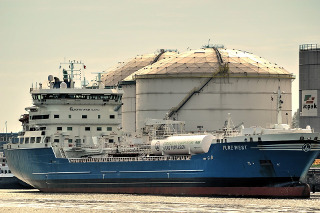Soon the first port terminal for liquefied gas is to be built in Brunsbüttel on the Elbe River, thus launching a forward-looking energy project for Germany. There, gas supertankers, which are often over 300m long and 30m high, can dock for the first time and the liquefied fuel from the ship's hulls, which has been cooled down to minus 126 degrees and shrunk to a six-hundredth of its original volume, can be converted back to its gaseous state.
For years, the construction of such a terminal was not politically necessary. The supply always ran through the terminals of neighbouring countries, such as France, Belgium and the Netherlands. These have sufficient capacity and are not even partially utilized. Germany also receives enough natural gas through huge pipelines from Norway or Russia to meet general demand.
So why did they decide to build such a terminal right now?
At the end of 2016, a study by the Institute of Energy Economics at the University of Cologne still wrote that the line connections with Belgium and the Netherlands are sufficient. However, the study also emphasises that "there will be developments in the small-scale LNG market that will make a German LNG terminal a worthwhile business in the future". This is precisely why the terminal in Brunsbüttel is now to be built by two Dutch companies in cooperation with the Hamburg-based tank farm logistics company Oiltanking GmbH. The frozen gas stored there is to be sold as an alternative fuel. This applies to cruise ships, inland ships or container ships as well as industrial gas for chemical companies in the region. This makes it possible to reduce polluting gases, which makes this project so forward-looking and why the construction of further terminals is already in the planning stage.
The whole article of Spiegel online can be viewed under the following link: http://www.spiegel.de/wirtschaft/unternehmen/lng-in-brunsbuettel-terminal-fuer-verfluessigtes-erdgas-geplant-a-1219905.html
